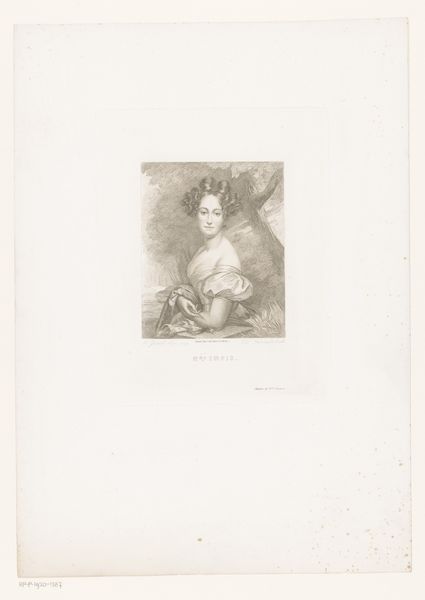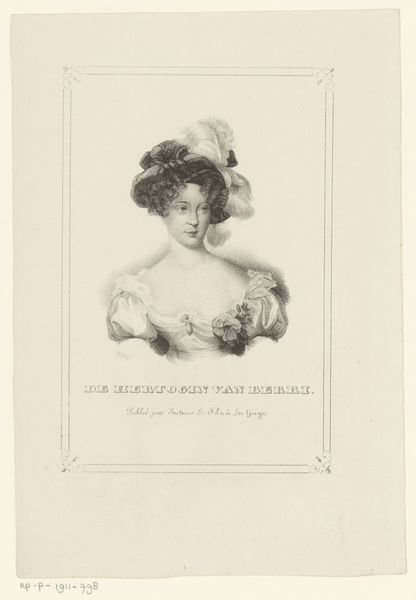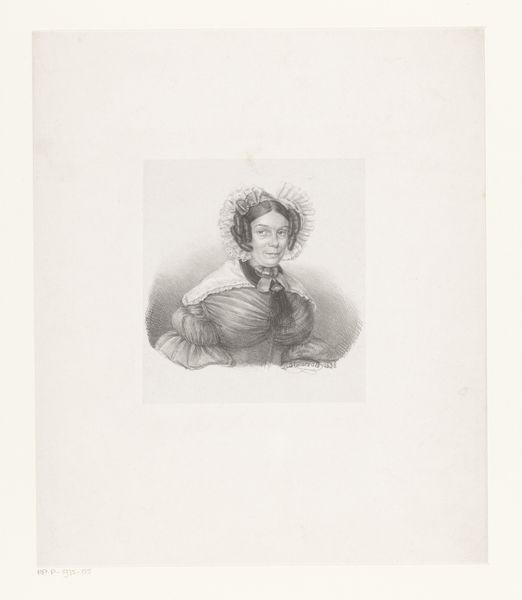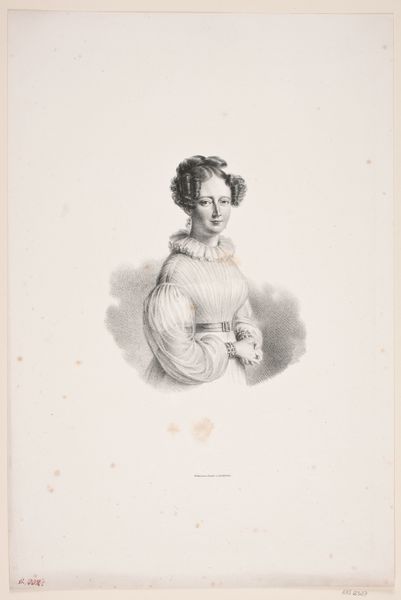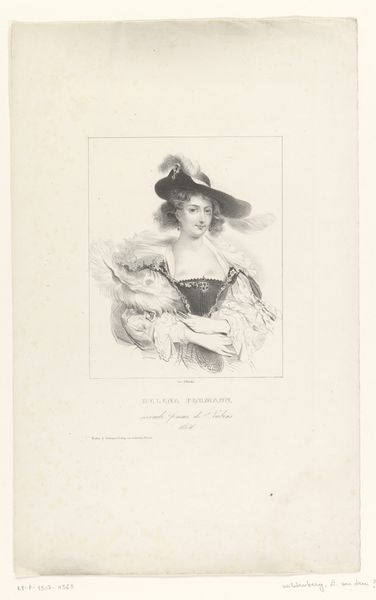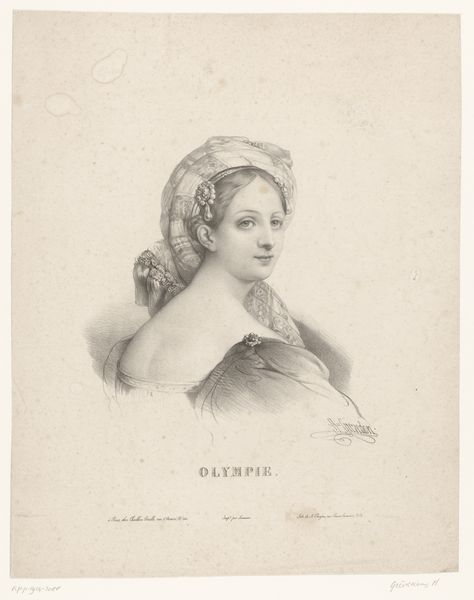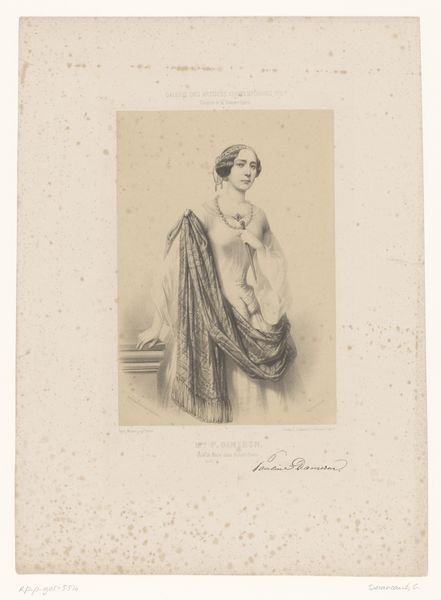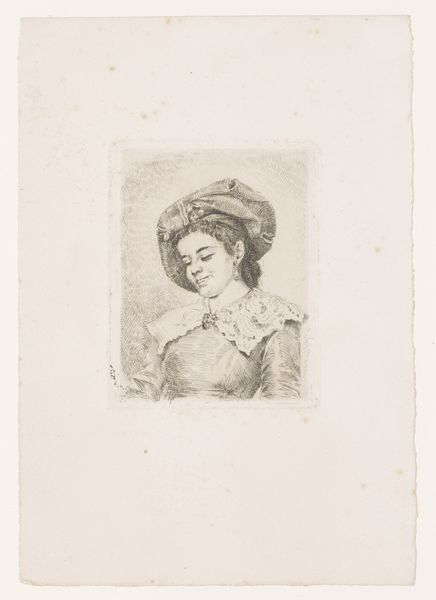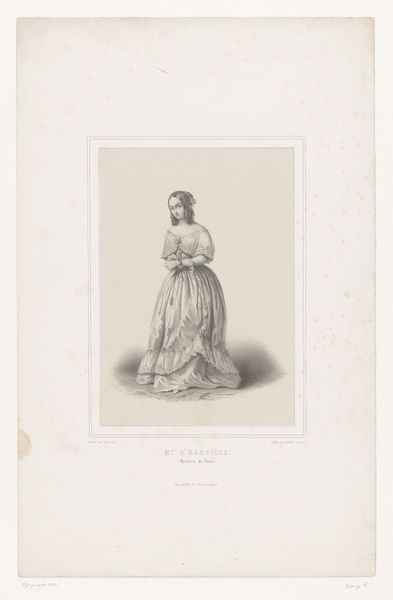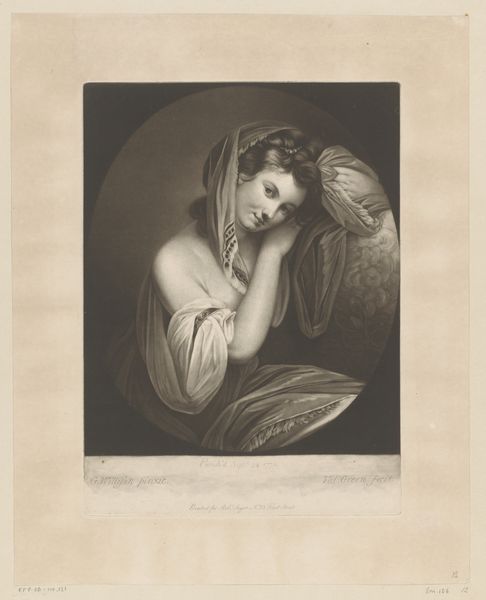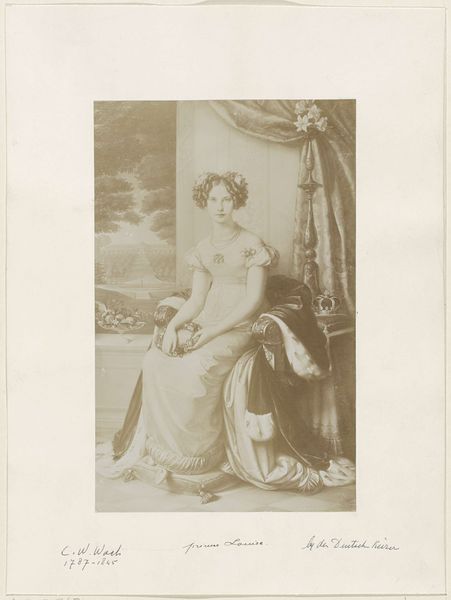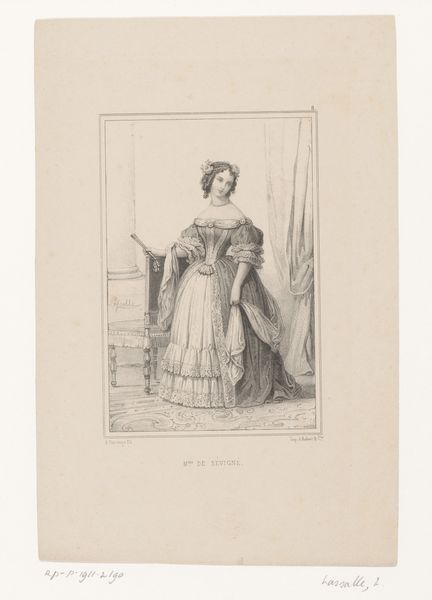
print, engraving
#
portrait
# print
#
old engraving style
#
romanticism
#
history-painting
#
engraving
Dimensions: height 353 mm, width 265 mm
Copyright: Rijks Museum: Open Domain
Artist: Ah, this portrait—it feels like a whisper from a bygone era. There’s a certain delicate melancholy that washes over me. Art Historian: Indeed. Here we have Franciscus Bernardus Waanders’ "Portrait of an Unknown Woman," an engraving dating back to about 1844-1845. It’s currently part of the Rijksmuseum’s collection. Artist: An engraving… You can almost feel the careful hand that created it, the countless tiny lines coming together to form this face, this expression. It reminds me of an old photograph, slightly faded, yet full of presence. There is some story untold within this artwork, hidden by shadows. Art Historian: Precisely. Engravings such as this were popular during the Romanticism era and they allowed for the broader dissemination of portraits, contributing to a growing culture of celebrity and visibility, even if the subjects themselves weren't always known figures. Artist: It's interesting, isn’t it, how a portrait of someone we don’t even know can still stir something within us? The tilt of her head, the way her eyes meet ours… she's almost challenging us to figure out what she is really thinking. What’s going through her mind? Art Historian: The anonymity actually adds to its historical value in a way, doesn’t it? It speaks to the more general social values of the time. Consider her dress, her posture—elements that would have resonated with contemporary viewers in ways we might not fully grasp today. We can also think about art ownership and portraiture through social class during the nineteenth century. Artist: Right! Her clothing—this dark elaborate dress with that peculiar huge hat— it also reminds me that our relationship with time can be so strange. A woman with elegance but without joy is, paradoxically, beautiful. What's the point to portrait a person without its own essence? I bet her own truth has faded with the artwork. Art Historian: True. This artwork shows the limitations, social conventions, and creative constraints around this artistic production that now, almost two centuries later, remains available for everyone, and yet partially obscure. Artist: Well, regardless, I find a curious resonance in this image. Art Historian: I agree, it offers us much to think about when considering social position, identity, and artistic purpose.
Comments
No comments
Be the first to comment and join the conversation on the ultimate creative platform.
